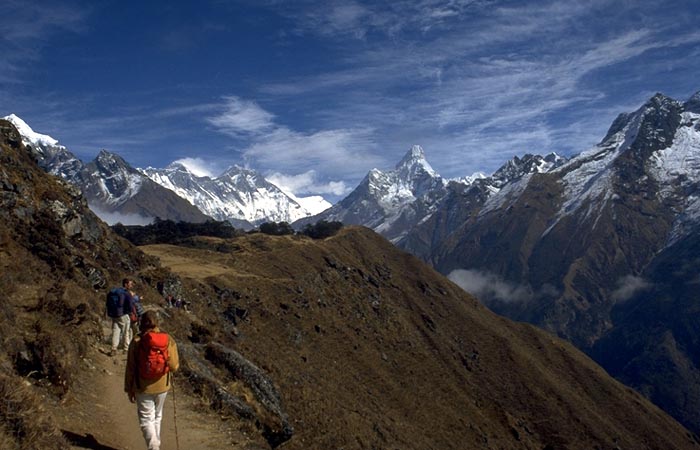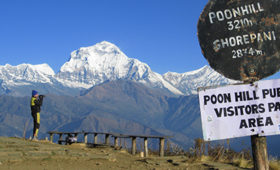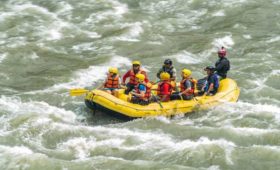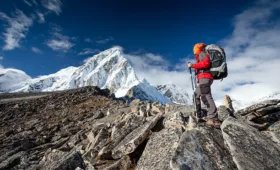The allure of Nepal’s towering peaks and ancient trails draws trekkers from around the globe, but for some, the call of the wild is best answered alone. A “solo trek in Nepal” offers a unique opportunity for self-discovery, allowing you to immerse yourself in the raw beauty of the Himalayas at your own pace. This guide provides essential insights and practical tips for embarking on a safe and fulfilling solo trekking adventure in Nepal.
Why Choose a Solo Trek in Nepal?
- Unparalleled Freedom: Set your own itinerary, choose your own pace, and experience the mountains on your own terms.
- Deep Immersion: Connect with the natural world and the local culture on a deeper level, free from the distractions of a group.
- Self-Discovery: Challenge yourself physically and mentally, and discover your inner strength and resilience.
- Flexibility: Adapt to changing conditions and spontaneous opportunities without compromising a group’s schedule.
Planning Your Solo Trek:
- Choosing the Right Trek:
- Popular Routes: Stick to well-established trails like the Annapurna Circuit, Everest Base Camp, or Langtang Valley, especially for your first solo trek. These routes offer well-marked trails and readily available tea houses.
- Avoid Remote Regions: For solo trekkers, remote regions like Dolpo or Upper Mustang are generally not recommended due to challenging terrain and limited infrastructure.
- Consider Your Experience: If you’re a novice trekker, choose a shorter and less demanding trek.
- Permits and Visas:
- Ensure you have a valid Nepal visa.
- Obtain the necessary trekking permits, including the TIMS card and national park entry permits.
- Best Time to Go:
- Spring (March-May) and Autumn (September-November) offer the most stable weather conditions and clear views.
- Avoid the monsoon season (June-August) due to heavy rainfall and potential landslides.
- Packing Essentials:
- Navigation: Carry a reliable map, compass, and GPS device.
- Communication: A satellite phone or personal locator beacon (PLB) is crucial for emergencies.
- First-Aid Kit: Pack a comprehensive first-aid kit, including altitude sickness medication.
- Water Purification: Carry water purification tablets or a filter.
- Food and Cooking: Consider packing lightweight snacks and a portable stove for emergencies.
- Warm Clothing and Gear: Pack layers of warm clothing, a good sleeping bag, and a sturdy tent if you plan to camp.
- Budgeting:
- Factor in permit fees, accommodation, food, and potential emergency expenses.
- Tea houses offer affordable accommodation and meals.
- Acclimatization:
- Altitude sickness is a serious concern. Plan your trek with gradual ascents and rest days.
- Stay hydrated and avoid strenuous activity in the initial days.
- Safety Precautions:
- Inform Others: Leave your itinerary with someone you trust.
- Check Weather Forecasts: Stay updated on weather conditions.
- Be Aware of Your Surroundings: Pay attention to trail markings and potential hazards.
- Trust Your Instincts: If something feels unsafe, turn back.
- Emergency Plan: Have a clear plan for emergencies, including evacuation procedures.
Essential Tips for Solo Trekkers:
- Learn Basic Nepali Phrases: This will enhance your interactions with locals and show respect for their culture.
- Respect Local Customs: Dress modestly, especially when visiting religious sites.
- Support Local Businesses: Patronize tea houses and restaurants run by local families.
- Practice Leave No Trace Principles: Minimize your environmental impact.
- Stay Connected: Share your location with someone back home and check in regularly.
- Be Prepared for Isolation: Embrace the solitude and enjoy the peace and quiet.
The Rewards of Solo Trekking:
Solo trekking in Nepal is an adventure that transcends physical challenges. It’s a journey of self-discovery, allowing you to connect with nature and your inner strength. The silence of the mountains, the warmth of the local people, and the sheer beauty of the Himalayas will leave an indelible mark on your soul.




